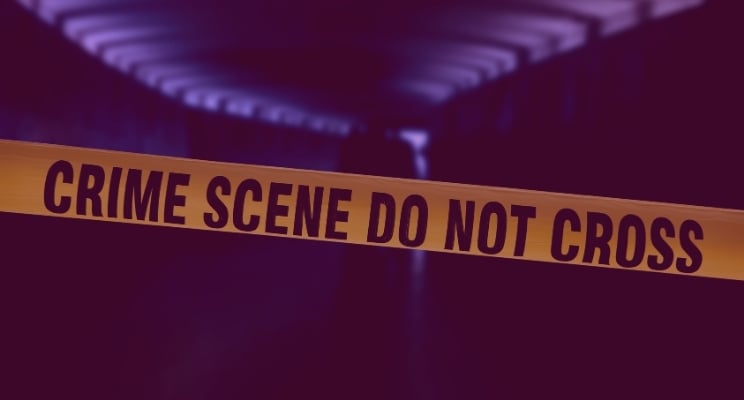5 unexpected places surveying technology is being deployed

Advances in point cloud registration algorithms (the application of vectors within a multi-stage process) have minimised the need for manual oversight during the registration process. This opens the door to applying scalability within a cloud computing environment to massively accelerate registration of large point cloud datasets.
If you want to learn more about the impact of point cloud registration and cloud technology on surveying, check out our free ebook — Are You Ready for the Cloud?
However, for our purposes here, the point is simply that point clouds (and reality capture technology) are far more accessible than ever before. To help highlight how this shift is expanding the value of reality capture technology outside of its traditional boundaries, we are going to look at five unexpected places surveying technology is being deployed today.
Let’s get started.
1. Visual effects (VFX)
VFX, along with media and entertainment in general, is an emerging field for LiDAR technology and laser scanners. Moving away from photogrammetry towards LiDAR has allowed some producers to create far more realistic images. Handheld 3D scanners provide a balance of speed, resolution, and more straightforward processing.
What it’s used for:
From camera movement to location scouting, 3D scanning offers precise point clouds data that can enable VFX teams to produce more realistic and believable outputs more quickly.
Why it’s used:
The legacy process required taking what had been filmed on set to create a virtual version in 3D. The goal was to digitally rebuild the entire camera motion (and the whole set) to make sure that everything matched and fit in. Doing this required taking countless measurements — but was also never truly accurate. 3D scanning gives the precision, accuracy and speed to create as “life-like” scenarios and animations as possible.
2. Historical preservation
Survey technology has continued to make inroads in archaeology and historic preservation. Greater accessibility has only increased its adoption.
What it’s used for:
Archaeology is all about preserving the past in order to learn from it. Entire archaeological scenes, buildings or monuments can be scanned, and then analysed digitally — accelerating the process, and improving results.
Increasingly, reality capture technology has also been deployed to scan statues or monuments prior to moving them. This allows details to be captured, giving curators the best chance of making a repair if anything is damaged in transit.
Why it’s used:
Reality capture technology provides a great way to make all necessary measurements without damaging the artefacts of historical architectures. It’s quick, non-invasive and delivers high levels of detail. The digital data can then be stored, creating a record of the historical artefacts and scenes should they ever be damaged or destroyed.
3. Crime scenes
3D laser scanners are increasingly used in crime scene units to improve the speed and efficiency of data collection. They promise scientifically accurate data to provide highly credible evidence in a court of law.
What it’s used for:
Reality capture technology can accurately depict the spatial relationship between each piece of evidence so investigators can rebuild and reconstruct crime scenes.
3D laser scans can assist with:
- bloodstain pattern analysis
- shooting incident reconstruction
- traffic collision data collection
- general crime scene reconstruction
Why it’s used:
Non-destructive
Traditional crime scene analysis techniques (such as plaster impressions of shoe prints) have their limits:
- The original trace is usually destroyed
- It takes crucial time to lift an imprint
- They are weather dependent
Laser scanners and point clouds allow for the faster collection of more accurate data, without damaging the original evidence.
Context
Scans can put crime scenes in context. The result is a more detailed investigation beyond the capabilities of traditional forensic tools.
- They can capture the precise location of evidence
- Reconstruct the scene
- Reconstruct the chain of events
3D scanning systems also have the power to bring a crime scene into the courtroom by using a systematic, scientific approach.
4. Healthcare
The medical and dental industries have long invested in 3D scanning technology. There’s a broad range of scanning applications already in operation — covering product design, medical treatment, and scientific research.
Any item that must conform to a patient's anatomy can benefit from a custom fit made possible by an accurate surface scan. 3D scanners have been deployed to capture the patient's form in order to deliver a perfect fit for surgical fixtures, implants and dental work.
What it’s used for:
Body metrics
Diagnostic methods, such as CT scans and X-rays, reveal detailed information about the body's internal structure. External measurements are just as useful.
Medical experts usually assess nutritional status and “developmental normality” by using external measurement. Using 3D scans, they can aid the calculation of drug dosage requirements, as well as the production of prostheses, using more exact analysis.
Research
3D scanners have had a significant impact on medical research. More detailed information about size and shape can transform the epidemiology of many diseases — replacing the current reliance on more general indicators such as the body mass index (BMI).
Cosmetic surgery
3D scanners can provide visualisation to help the relationship between clinician and patient in cosmetic surgery procedures. While clinicians can use measurements of body properties to assess risk and guide health management, patients can use the same information in the context of other aspects of their lives — as well as view computer-aided models regarding end results.
Why it’s used:
Free-flowing, organic shapes are virtually impossible to measure with traditional measurement devices. Moreover, LiDAR is absolutely harmless. X-rays and MRIs carry a risk. 3D scans are non-invasive and bring no side effects.
5. On your phone?
In addition to advances in point cloud processing (and other software components of reality capture technology), the hardware has continued to improve. A recent Halide's proof-of-concept app Esper demonstrates the potential of the new LiDAR sensor in the iPad/iPhone. This technology could open up many new areas in AR and VR as it enables app developers to invent new creative approaches in the use of scanning technology.
At the moment, LiDAR scanners on the iPad/iPhone are more of a glimpse into the future than a serious proposition. However, the amount of video content now being produced on iPhones/iPad shows the potential for phone-based technology to usurp more professional equipment. The real leap may come when these sensors and apps arrive on future devices such as Apple Glasses. But this is certainly a space to watch.
Where are the opportunities
Both historical preservations and crime scenes provide the two largest potential markets for surveyors. By October 2020, crime scene and collision investigators will have to conform to two global standards. Lab testing must be accredited to ISO/IEC 17025, and scene examination certified to ISO/IEC 17020. There is already a thriving heritage and scan-to-BIM market for existing historical sites.
It will be a lot of work initially achieving the ISO accreditation, and it will have an operational impact on day-to-day work. The rollout of new technology will require training help, and contractor support — all of which are areas that survey teams are poised to fill.
On the other hand, healthcare is a largely closed ecosystem, and the introduction of LiDAR technology into consumer goods (smartphones) is more of a disruptive trend to watch than a specific commercial opportunity. However, surveyors should certainly be open to working on movie sets, and other entertainment-focused projects — delivering the details needed to perfect VFX.
In all cases, surveyors who embrace the latest technology, and cloud-based collaboration software, will be best positioned to capitalise on these future opportunities. If you haven’t already, check out our free eBook — Are You Ready for the Cloud? — to learn more.
Tags: surveying



